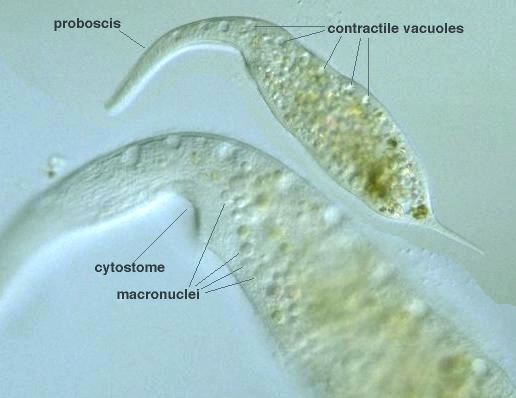 Genus: Body long, rear usually pointed (Illustrated Guide, 1985).
Elogate; snout or neck-like prolongation (proboscis) conspicuous; contractile vacuoles two or more (Kudo, 1966).
Contractile vacuoles usually lie in a row along the dorsal surface (Carey, 1992).
Genus: Body long, rear usually pointed (Illustrated Guide, 1985).
Elogate; snout or neck-like prolongation (proboscis) conspicuous; contractile vacuoles two or more (Kudo, 1966).
Contractile vacuoles usually lie in a row along the dorsal surface (Carey, 1992).
Species: 250-400 (sometimes up to 600) μm long; numerous macronuclei; contractile vacuoles in a row on the aboral surface (Kudo, 1966). 200-600 μm long; small tail region; 200-500 very small macronuclei; contractile vacuoles from anterior to posterior on the dorsal surface (Carey, 1992).





